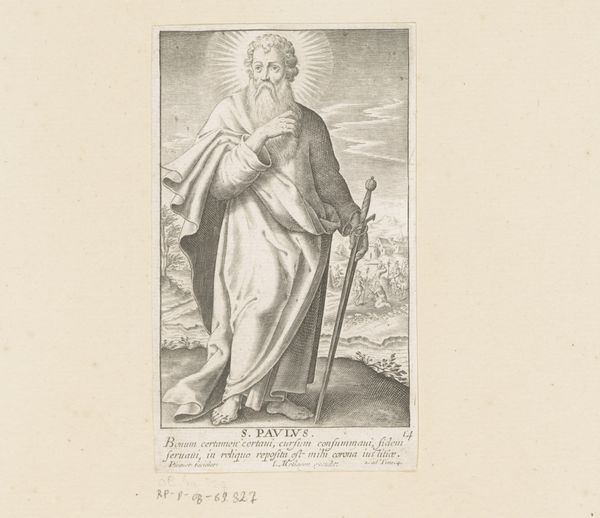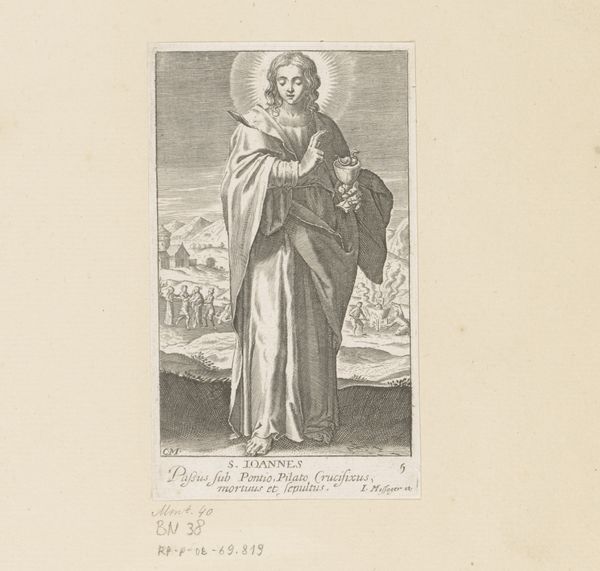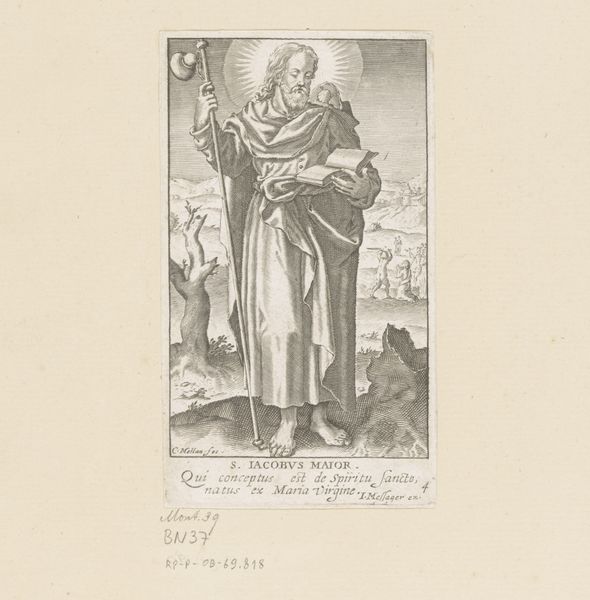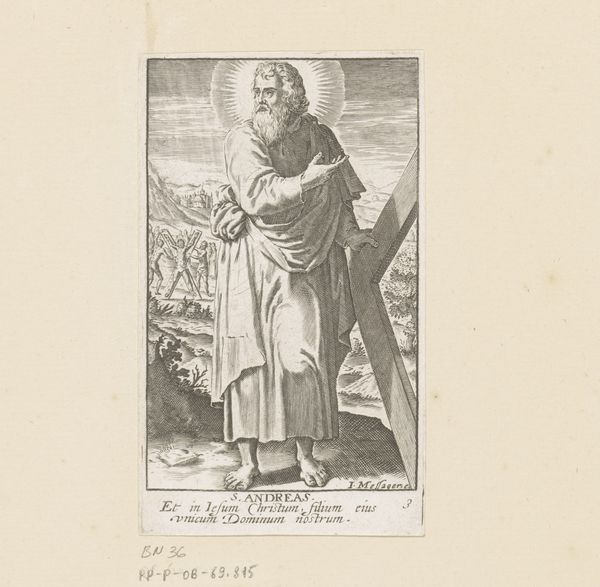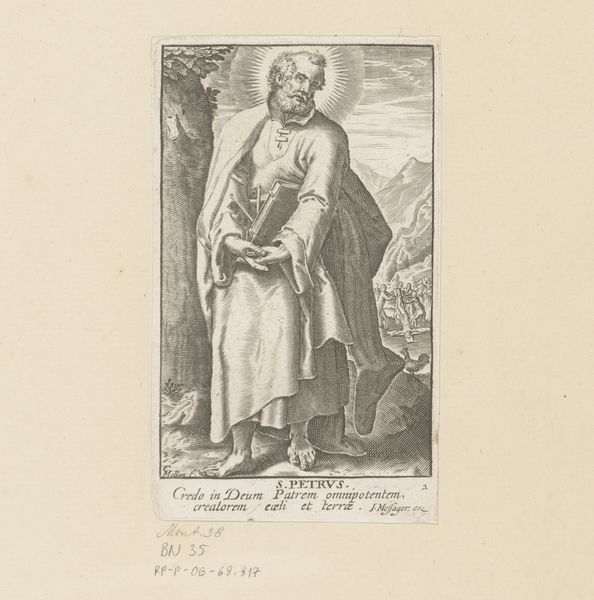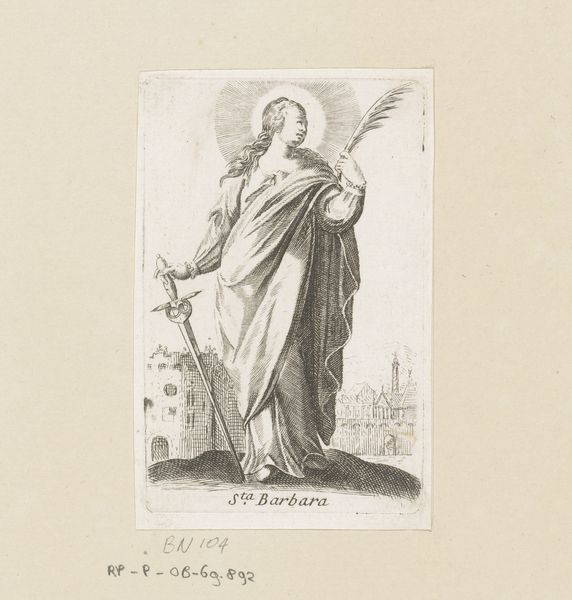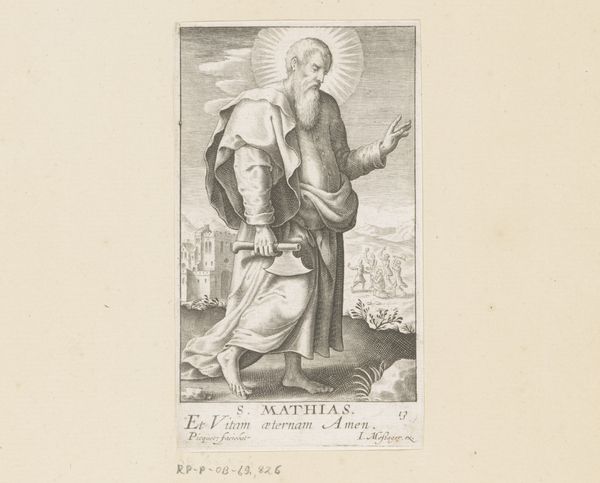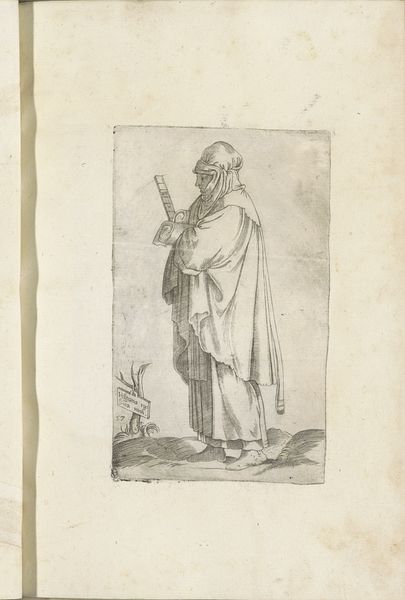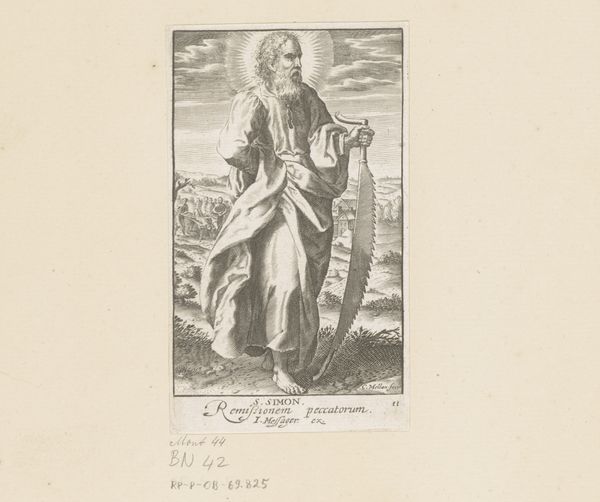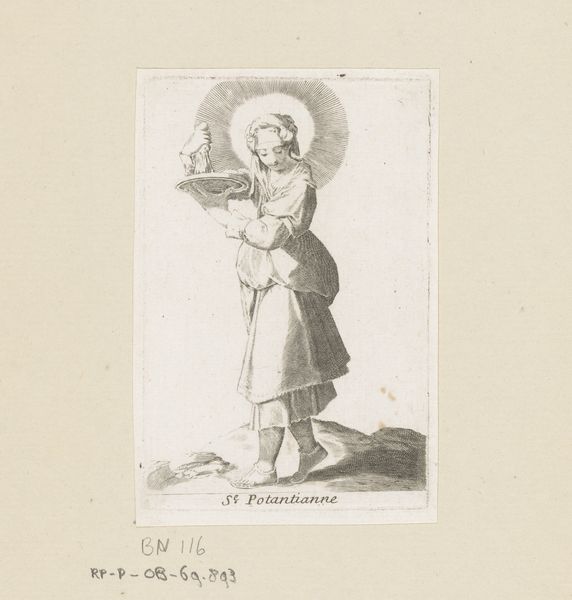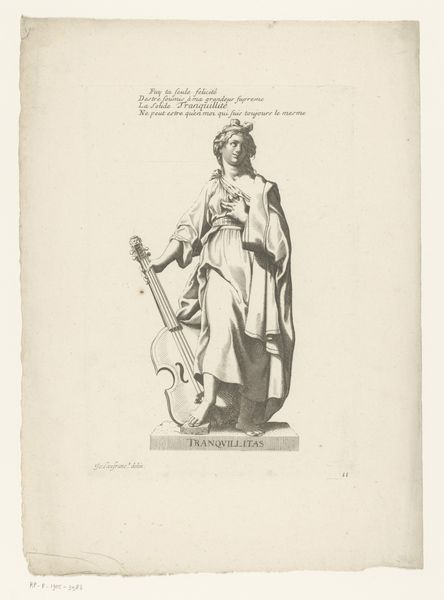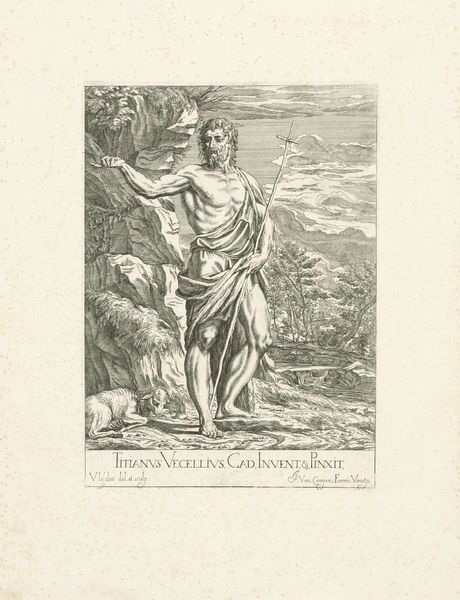
print, engraving
#
baroque
# print
#
old engraving style
#
figuration
#
history-painting
#
engraving
Dimensions: height 114 mm, width 68 mm
Copyright: Rijks Museum: Open Domain
Claude Mellan created this engraving of H. Matteüs, in the 17th century. At first glance, the most striking feature of the work is its reliance on a single, continuous line to define form, texture, and value. This technique, demanding exceptional control and precision, creates a visual experience that is both detailed and surprisingly unified. Mellan's engraving is a study in the power of line. The single, unbroken line winds and loops across the surface to define the figure of Saint Matthew, his robes, and the surrounding landscape. This method is not just a technical feat; it challenges the traditional understanding of how images are constructed. The density and variation of the line create areas of light and shadow, giving the figure volume and presence. This approach destabilizes the conventional values of artistic representation, questioning the boundaries between drawing and printmaking. The artwork invites us to consider how meaning is constructed through the simplest of means, pushing the limits of what is possible within the medium. Ultimately, the enduring impact of Mellan's work lies in its innovative use of line to redefine the very nature of representation.
Comments
No comments
Be the first to comment and join the conversation on the ultimate creative platform.

